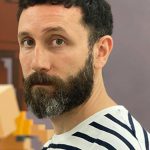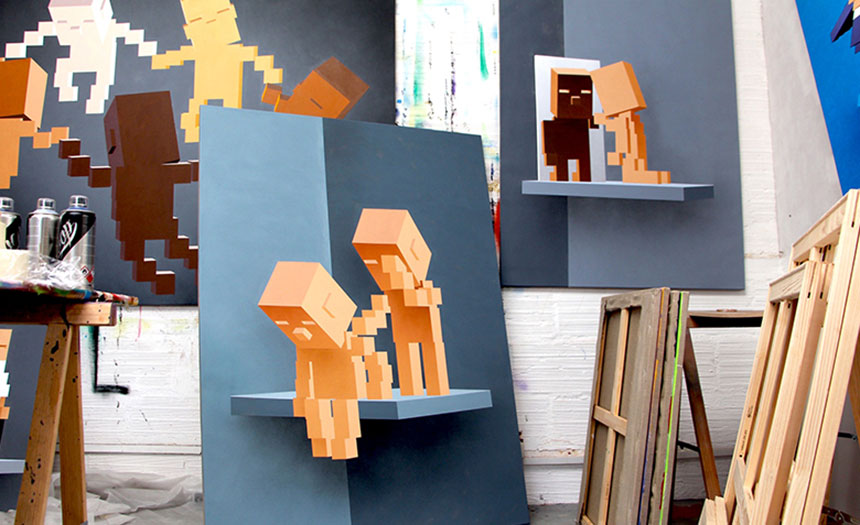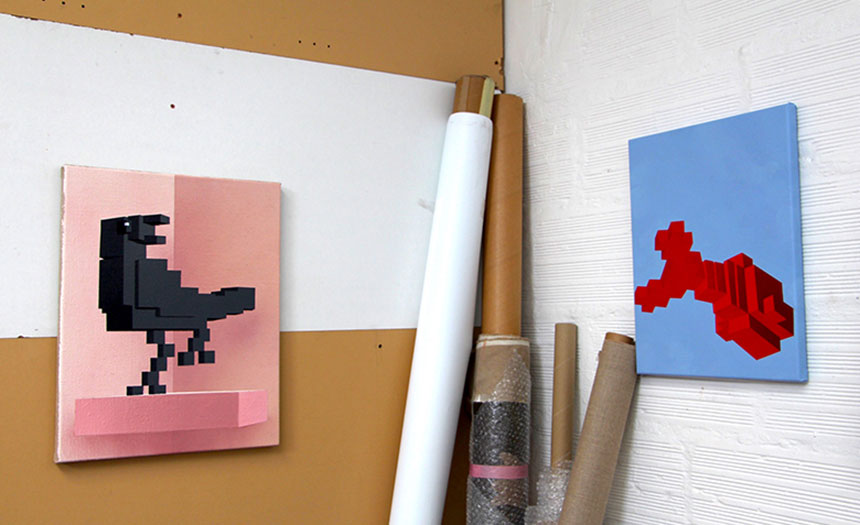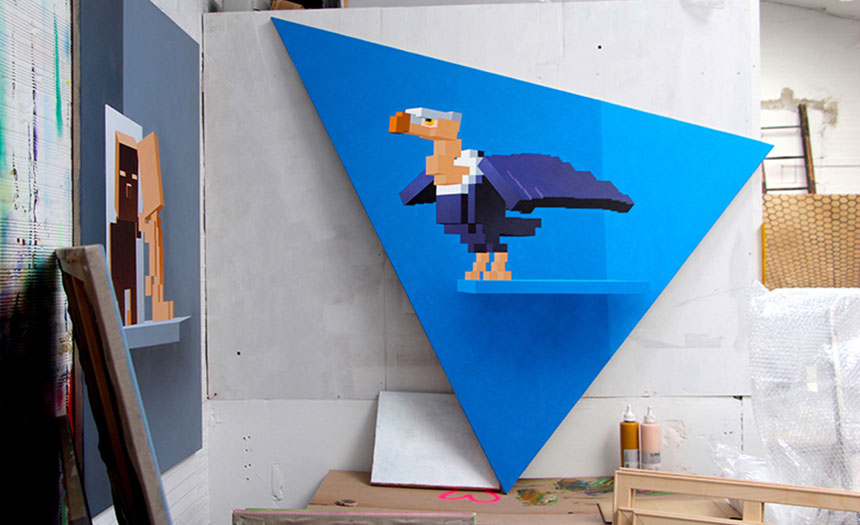By: Ghazal Mostafa
 Sepand Danesh was born in 1984, Tehran, Iran, and has lived and worked in Paris since he was 12. He uses drawing, painting and sculptures as a rhizome of opportunity to understand human condition through its behavior. His paintings embody the optical illusion of the inside corner without floor or ceiling (as the metaphor of impediment) and they shelter his personal memory and also a larger cognition of the human race through history, the sciences and the arts.
Sepand Danesh was born in 1984, Tehran, Iran, and has lived and worked in Paris since he was 12. He uses drawing, painting and sculptures as a rhizome of opportunity to understand human condition through its behavior. His paintings embody the optical illusion of the inside corner without floor or ceiling (as the metaphor of impediment) and they shelter his personal memory and also a larger cognition of the human race through history, the sciences and the arts.
Thank you so much for giving Trends this exclusive interview. Please introduce yourself and tell us about the journey that got you into the world of fine arts.
I was born in Tehran during the Iran-Iraq war in 1984. As a child I felt trapped in that conflict and in the social and political changes that transpired during those years in Iran. At the age of 12, I left Iran with my parents. It was the beginning of a long journey in which I experienced another series of traumatic events such as the loss of my native language and socio-cultural affiliations, as well as financial security, in addition to the experience of war in Iran. I was somehow pushed to literally think my inner feelings out and find ways to escape.
At first it was simply drawings. I imagined a grid in which I fragmented my reality into small pictograms. I did thousands of drawings over many years. Then one day I was finally able to take a step back and discover a specific form of behavior and expression called “ART”. I wanted to know more about it and to practice it.
When I started painting, my interior world was so far away from my surrounding reality that I needed to find a space to express it. The idea of the “corner” as represented in my paintings, the vertical space without floors and ceilings, seemed to suit my penchant for double-entendre. As enveloping as it is repelling, the corner embodies the dual dialectic of confinement and escape. I realized that this duality is somehow a metaphor of human condition, trapped on earth, in bodies, in language, in ideas, etc. and that each human being will experience it in some form and at some point in a lifetime.

Since this discovery, I have concentrated all my philosophical research on finding and making an archive of similar human experiences found in art, science, and history.
The corner blocks the viewer and because of that, forces him to escape the reality of being trapped through imagination and fantasy of the mind. A shelf is placed in my corners, for instance, that creates a platform to host combinations of fragments that produces humanized objects.
More recently, I have started a new set of work of sculptures based on the combination of similar fragments as in my drawings, and these constructed figures are characters composed of cubes that live in my corners. With this concept in mind, I have produced 25 sculptures for the French Pavilion in Dubai Expo 2020. Visitors can experience the sculptures physically by using them as urban furniture.
Tell us about the design process for the French pavilion and how you got involved in Dubai 2020 Expo? How does it feel as an Iranian-French artist to be contributing at Dubai Expo?
No matter how impressive and big an exhibition is, at some point people will need to rest. My sculptures, based on 20cm cubes create the perfect ergonomics for human body as much as for adults as for children. Also, I wanted everybody to feel they can use the esplanade as they wish.

What is the story/ concept behind the sculptures? What ideas inspired you?
The sculptures are made from wood with metallic interior structures and then painted over. Each cube has four shades of the same color. For example, a yellow cube is painted with four different shades of yellow. This particularity gives a digital aspect to the pieces because the light and shadow on the sculptures stay always the same no matter what the surrounding light. The shapes are inspired by an interstellar radio message sent to space in 1974, carrying basic information about humanity and Earth.
What were some of the difficulties and challenges you had faced during the design and also construction and installation process of the sculptures at Dubai Expo 2020?
Every part of this project was a challenge. Apart from technical problems, working during Covid-19 made things way more complicated. But with the help of everyone involved in this project, we were finally able to make it.

What inspires you the most? What are the main materials and mediums that you use?
Both my parents were book lovers, and my inspirations are mainly from literature. I am most interested in the way that humans have tried to escape obstacles both mental and physical. I use all material and mediums, try new things, and always want to push my limits further.
What inspires you in your drawings and creative ventures? What lies behind your vision in your work?
I have a wide range of possibilities that I keep in my drawings and when I find a very interesting hero, I always look forward to finding its anti-hero. Coming from a very divided background, I have learned that inspiration is like the cockpit of an airplane. Pilots must know all the buttons on their cockpit panel even if they never use them. Because if one day, when they are cruising at several thousand meters of altitude, a button starts flashing indicating a problem, they must know what it is all about and be able to find an immediate solution. It’s the same for artists. Art helps building links between individuals and their environment but unfortunately, art is not recognized for its real effect on human development and without it a decline of civilization is not only inevitable but also a slow process which makes it irreversible or very hard to rebuild. Berthold Brecht used to say: we often talk about the violence of the flow which carries everything but never of the violence of the shores. Art constitutes the shores of all civilizations.
You briefly mentioned that Covid-19 affected your work at the Expo. But how has the pandemic impacted your work as a whole? Do you think that the pandemic has changed the art scene forever or at least for the foreseeable future?
Covid-19 has not affected my research because as I pointed out earlier, I have always felt trapped and confined in different ways, but Covid-19 shows that a big change is occurring in the human behavior and the pandemic is not the cause of it but one of its consequences.
What project(s) are you currently working on? Please tell us about your upcoming projects (including shows, exhibitions etc.)
My favorite thing to do is to be part of collaborations with researchers about fragmented reality, meta cognition in art, paradox of the concept of the corner, network sciences and similar subjects. I have a few propositions for new public space intervention projects which seem to be a very challenging area for urban design, and I have upcoming shows also in galleries that I regularly update on my Instagram.



